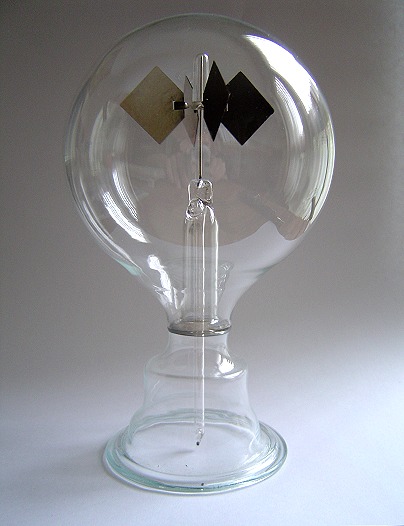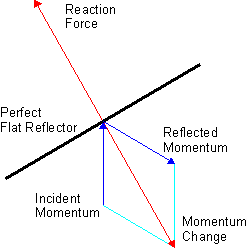Winston
Lorenzo von Matterhorn
- Joined
- Jan 31, 2009
- Messages
- 9,560
- Reaction score
- 1,748
Hope it pans out:
Anomalous Thrust Production from an RF Test Device
Measured on a Low-Thrust Torsion Pendulum
https://ntrs.nasa.gov/archive/nasa/casi.ntrs.nasa.gov/20140006052.pdf
https://ntrs.nasa.gov/search.jsp?R=20140006052
Excerpt:
This paper describes the eight-day August 2013 test campaign designed to investigate and demonstrate
viability of using classical magnetoplasmadynamics to obtain a propulsive momentum transfer via the
quantum vacuum virtual plasma.
Test results indicate that the RF resonant cavity thruster design, which is unique as an electric propulsion
device, is producing a force that is not attributable to any classical electromagnetic phenomenon and
therefore is potentially demonstrating an interaction with the quantum vacuum virtual plasma.
NASA tested an "impossible" space engine and it somehow worked
https://www.theverge.com/2014/8/1/5959637/nasa-cannae-drive-tests-have-promising-results
Excerpt:
The idea is that microwaves bouncing from end-to-end of a specially designed, unevenly-shaped container can create a difference in radiation pressure, causing thrust to be exerted toward the larger end of the container. A similar type of technology called an EmDrive has been demonstrated to work in small scale trials by Chinese and Argentine scientists.
While the amount of thrust generated in these NASA's tests was lower than previous trials between 30 and 50 micronewtons, way less than even the weight of an iPhone, as Nova points out the fact that any thrust whatsoever is generated without an onboard source of fuel seems to violate the conservation of momentum, a bedrock in the laws of physics.
On the mentioned EmDrive, from Wikipedia:
https://en.wikipedia.org/wiki/EmDrive
The [EmDrive] device and its mode of operation are highly controversial. As of 2014, it is still not proven if the EmDrive is a genuinely new propulsion method; a misinterpretation of spurious effects mixed with mathematical errors; or a scam. The proposed theory immediately received virulent criticism because it seems to violate basic Newtonian laws of physics, notably conservation of momentum,[10][11] though the inventor insists on the contrary.[12] Whatever it be, peer reviewed independent replication has been provided by Chinese researchers from the Northwestern Polytechnic University on both mathematical and experimental grounds.[4][13] in 2008,[14] 2010,[15] 2012,[16] and 2013.[17] NASA has followed suit with these claims by a validation of the experiment, replicated in Eagleworks Laboratories at the Johnson Space Center.[9][18]
Anomalous Thrust Production from an RF Test Device
Measured on a Low-Thrust Torsion Pendulum
https://ntrs.nasa.gov/archive/nasa/casi.ntrs.nasa.gov/20140006052.pdf
https://ntrs.nasa.gov/search.jsp?R=20140006052
Excerpt:
This paper describes the eight-day August 2013 test campaign designed to investigate and demonstrate
viability of using classical magnetoplasmadynamics to obtain a propulsive momentum transfer via the
quantum vacuum virtual plasma.
Test results indicate that the RF resonant cavity thruster design, which is unique as an electric propulsion
device, is producing a force that is not attributable to any classical electromagnetic phenomenon and
therefore is potentially demonstrating an interaction with the quantum vacuum virtual plasma.
NASA tested an "impossible" space engine and it somehow worked
https://www.theverge.com/2014/8/1/5959637/nasa-cannae-drive-tests-have-promising-results
Excerpt:
The idea is that microwaves bouncing from end-to-end of a specially designed, unevenly-shaped container can create a difference in radiation pressure, causing thrust to be exerted toward the larger end of the container. A similar type of technology called an EmDrive has been demonstrated to work in small scale trials by Chinese and Argentine scientists.
While the amount of thrust generated in these NASA's tests was lower than previous trials between 30 and 50 micronewtons, way less than even the weight of an iPhone, as Nova points out the fact that any thrust whatsoever is generated without an onboard source of fuel seems to violate the conservation of momentum, a bedrock in the laws of physics.
On the mentioned EmDrive, from Wikipedia:
https://en.wikipedia.org/wiki/EmDrive
The [EmDrive] device and its mode of operation are highly controversial. As of 2014, it is still not proven if the EmDrive is a genuinely new propulsion method; a misinterpretation of spurious effects mixed with mathematical errors; or a scam. The proposed theory immediately received virulent criticism because it seems to violate basic Newtonian laws of physics, notably conservation of momentum,[10][11] though the inventor insists on the contrary.[12] Whatever it be, peer reviewed independent replication has been provided by Chinese researchers from the Northwestern Polytechnic University on both mathematical and experimental grounds.[4][13] in 2008,[14] 2010,[15] 2012,[16] and 2013.[17] NASA has followed suit with these claims by a validation of the experiment, replicated in Eagleworks Laboratories at the Johnson Space Center.[9][18]








